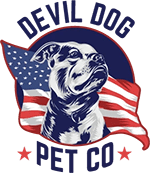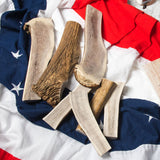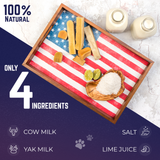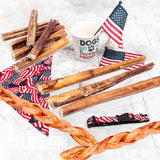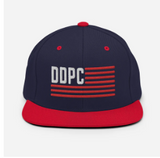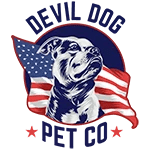Dog Wipes: Versatile Tools Beyond Basic Cleaning
Dog wipes are the tactical gear of canine hygiene—compact, ready for action, and far more versatile than most owners realize. These pre-moistened cloths aren't just for quick clean-ups; they're multifunctional tools that solve problems from paw maintenance to skin health. As a Marine, I learned that the most valuable equipment serves multiple purposes, and quality dog wipes absolutely fit that bill.
Key Takeaways
- Dog wipes are compact and convenient tools designed for more than just basic cleaning.
- They serve multiple functions including paw maintenance and promoting skin health.
- The versatility of dog wipes makes them essential for effective canine hygiene.
- Quality dog wipes are comparable to multi-purpose tactical gear in their usefulness.
- Using dog wipes can simplify and enhance daily pet care routines.
Table of Contents
- Dog Wipes: Versatile Tools Beyond Basic Cleaning
- 5 Essential Uses for Dog Wipes Beyond Basic Cleaning
- Choosing Effective Dog Wipes: What Matters
- Tactical Application Techniques
- Tactical Application Techniques
- Integrating Wipes Into Your Leadership Routine
- Environmental and Health Considerations
- DIY Wipe Solutions for Emergency Situations
- Advanced Dog Wipe Applications
- Conclusion: Beyond Basic Cleaning
When our dog Dexter came bounding in from the backyard covered in mud last spring, I grabbed our stash of dog wipes before he could transform our living room into a disaster zone. That quick intervention saved our furniture and my sanity—but it also highlighted how these simple tools prevent bigger problems when deployed correctly.
The right dog wipes contain pet-safe ingredients formulated specifically for canine skin pH (which differs significantly from humans). This isn't just marketing—it's science that matters for your dog's comfort and health. For a deep dive into how dog wipes work and what to look for, check out this comprehensive guide to dog wipes.
5 Essential Uses for Dog Wipes Beyond Basic Cleaning

1. Paw Protection Protocol
Your dog's paws encounter everything from road salt and pesticides to allergens and plain old dirt. These environmental hazards don't just make paws dirty—they create health risks when your dog inevitably licks them clean.
After walking Dexter through our neighborhood during Michigan winters, I immediately wipe each paw thoroughly, paying special attention between the pads where ice-melting chemicals hide. This simple 30-second routine prevents chemical burns, reduces allergen exposure, and eliminates the risk of toxin ingestion.
A customer with a Labrador in Arizona shared that she keeps wipes for pets in her car specifically for scorching summer days. After walks on hot pavement, she uses them to cool her dog's pads while checking for burns or cracks—prevention that's worth its weight in gold.
2. Post-Medication Cleanup
Administering topical flea treatments or medicated ointments often leaves residue on your hands and sometimes on your dog's coat. Dog wipes offer the perfect solution for removing excess medication from your fingers and ensuring the product stays exactly where it should on your dog.
When applying Dexter's monthly preventative, I keep wipees nearby to clean any product that gets on my hands or accidentally transfers to other areas of his coat. This prevents accidental ingestion if he licks areas that shouldn't have medication on them.
The gentle formulation of quality dog wipes won't neutralize the medication itself but will safely remove excess from surrounding areas. This precise application ensures maximum effectiveness while minimizing waste and potential side effects.
3. Allergy Management System
Environmental allergies plague many dogs, especially during seasonal changes. Pet wipes for dogs provide tactical defense by removing allergens before they can penetrate the skin or get tracked throughout your home.
For dogs with known pollen sensitivities, a quick wipe-down after outdoor time can dramatically reduce itching, hot spots, and general discomfort. Focus on areas where allergens collect: paws, belly, muzzle, and around the eyes.
One veteran in our community reported that his German Shepherd's chronic ear infections decreased by 70% after implementing a simple post-walk wipe routine during ragweed season. The connection? Fewer environmental allergens making their way into the ear canal meant fewer flare-ups.
4. Senior Dog Dignity Maintenance
As dogs age, their mobility and self-grooming abilities often decline. Senior dogs may struggle to keep themselves clean, particularly in hard-to-reach areas. Dog wipes provide a dignified solution that maintains hygiene without the stress of frequent bathing.
For older dogs with arthritis or mobility issues, gentle wipe-downs can:
- Clean facial folds and wrinkles where bacteria thrive
- Remove food particles from beard and chest areas
- Keep the perineal area sanitary when bathroom visits become messier
- Freshen areas prone to "old dog smell" without stripping natural oils
When Dexter had surgery last year, full baths were off-limits during recovery. Dog wipes became our primary hygiene tool, allowing us to keep him comfortable and clean without compromising his incision site.
5. Travel Readiness Kit
Dog wipes earn their keep during travel when normal routines get disrupted. Whether you're camping, staying in hotels, or visiting family, these portable cleaners solve multiple problems on the go.
Pack them in your dog's travel kit to:
- Clean muddy paws before entering tents or vehicles
- Remove sand after beach adventures
- Freshen your dog before entering pet-friendly establishments
- Handle unexpected messes when full bathing facilities aren't available
During our last camping trip, Dexter discovered a particularly pungent patch of dead fish along the lakeshore. Without access to a bath, pet wipes for dogs saved our tent (and our noses) from what would have been an unbearable night. For more pro travel tips, check out our comprehensive guide to traveling with dogs.
For more detailed advice on ear hygiene, including the use of dog ear wipes, check out our blog specifically dedicated to maintaining your dog’s ear health.
Choosing Effective Dog Wipes: What Matters
Not all dog wipes deliver equal performance. After testing dozens of brands with Dexter and hearing feedback from hundreds of Devil Dog customers, I've identified the non-negotiable features that separate tactical-grade wipes from subpar options:
Material Strength Matters
The physical construction of the wipe determines whether it stands up to serious cleaning or disintegrates mid-wipe. Look for:
- Thick, textured material that traps dirt rather than smearing it
- Tear-resistant construction that handles scrubbing without falling apart
- Adequate moisture content—too dry and they don't clean, too wet and they're wasteful
The wipe should feel substantial between your fingers. If it feels like a flimsy baby wipe, it won't handle the demands of dog cleanup—especially for larger breeds or outdoor enthusiasts. If your dog is on the larger side, you may want to browse our products for large dogs for other essential care options.
Ingredient Intelligence
The formulation separates dog-specific wipes from human alternatives. Effective dog wipes should contain:
- Gentle cleansers formulated for canine skin pH (around 7.5, more alkaline than human skin)
- Soothing ingredients like aloe vera or chamomile
- No alcohol, which can dry and irritate skin
- No artificial fragrances that may trigger allergies
- No parabens, sulfates, or harsh preservatives
Many customers ask if human baby wipes work just as well. The answer is a firm no—the pH difference alone can disrupt your dog's skin barrier with regular use, potentially leading to irritation, dryness, and even infections. For a thorough breakdown on what makes dog wipes safe, see this guide to wet wipes for dogs.
Size and Packaging Efficiency
Practical considerations matter when you're dealing with a squirming dog or outdoor emergencies:
- Wipes should be large enough to clean a substantial area without using multiple sheets
- Packaging must seal effectively to prevent remaining wipes from drying out
- Travel packs should have sturdy closures that don't pop open in your bag
I've found that resealable hard-plastic containers outperform soft packs for maintaining moisture over time. The initial cost might be higher, but you'll waste fewer dried-out wipes in the long run.
Tactical Application Techniques

Effective wiping isn't just about the product—it's about technique. These field-tested methods maximize cleaning efficiency while minimizing stress for your dog:
Paw Cleaning Protocol
Instead of chasing each paw individually, establish a consistent routine:
- Start with a command like "Paws" that signals cleaning time
- Use one wipe per paw, folding to a fresh section for each toe
- Gently spread toes to access between-pad debris
- Wipe top of paw last (it's usually cleanest)
This systematic approach turns what could be a wrestling match into a smooth operation that most dogs learn to tolerate or even enjoy.
Tactical Application Techniques
Like any mission, wiping your dog requires strategy and proper execution. These field-tested methods maximize cleaning efficiency while minimizing stress for both you and your four-legged teammate:
The Paw Rotation System
Instead of chasing moving targets, establish a consistent routine that your dog can anticipate. I've trained Dexter to present each paw on command using this approach:
- Begin with a consistent cue like "Paws" that signals cleaning time
- Work in the same order every time (front left, front right, back left, back right)
- Use one wipe per paw, folding to expose a clean section for each toe
- Gently spread toes to access between-pad debris where allergens hide
- Reward with praise after each paw (or treats for beginners)
This systematic approach transforms what could be a wrestling match into a smooth operation that most dogs learn to tolerate or even enjoy. One customer's Husky went from paw-cleaning protests to voluntarily offering his paws after just two weeks of consistent practice.
Facial Fold Technique
For breeds with facial wrinkles or eye discharge issues, proper technique prevents irritation:
- Use a fresh section of wipe for each eye to prevent cross-contamination
- Wipe from inner corner outward, never dragging debris toward the eye
- For wrinkled breeds, gently separate folds and use a dabbing motion rather than dragging
- Allow the area to air-dry completely before releasing your dog
A customer with a Bulldog reported that switching from rough cloth wipes to proper dog wipees eliminated his dog's chronic fold infections. The gentle formulation and proper technique made all the difference in preventing bacterial growth.
Full-Body Efficiency Pattern
When Dexter needs a complete refresh after romping through Michigan mud, I follow this Marine-approved pattern that uses minimal wipes for maximum coverage:
- Start with the cleanest areas (back and sides) and work toward dirtier zones
- Wipe in the direction of hair growth to prevent irritation
- Use long, firm strokes rather than scrubbing to lift dirt without creating mats
- Save belly, chest, and rear for last, using fresh wipes for these higher-soil areas
This methodical approach ensures you're not spreading dirt from heavily soiled areas to cleaner ones—a rookie mistake that wastes wipes and time.
Integrating Wipes Into Your Leadership Routine
Dog wipes aren't just cleaning tools—they're leadership opportunities. Extreme Dog Leadership means turning every interaction into a chance to reinforce your role as benevolent pack leader.
Building Handling Tolerance
Many dogs resist being touched on certain body parts—paws, ears, and rear areas typically top the list. Regular, positive wiping sessions desensitize your dog to handling these sensitive zones:
- Start with brief, gentle wipes paired with high-value treats
- Gradually increase duration as your dog becomes comfortable
- Use consistent verbal cues that signal the beginning and end of cleaning time
This practice pays dividends beyond cleanliness—it makes veterinary exams, nail trims, and medication administration significantly easier. One veteran with a previously touch-sensitive Shepherd mix reported that daily ear wipe sessions transformed vet visits from three-person wrestling matches to calm check-ups.
Establishing Post-Activity Expectations
Dogs thrive on routine and clear expectations. By incorporating wipe-downs after specific activities, you create structure that helps your dog understand the rules:
- Always wipe paws before re-entering the house after walks
- Clean face and beard after meals or water bowl visits
- Full-body wipe after dog park or beach outings
These consistent routines reinforce boundaries—"we don't bring outside dirt inside" and "we clean up after ourselves"—concepts that translate to better overall behavior and respect for your leadership. If you're interested in further tips on building positive routines, see our guide for first-time pup owners.
Creating Positive Associations
The secret to willing participation in wiping sessions is building positive associations from day one:
- Pair wipes with calm praise and occasional treats
- Use the same location for routine cleaning (entry mat, specific bathroom)
- Keep sessions brief and end on a positive note
- Follow cleaning with something enjoyable (playtime, feeding)
Dexter now voluntarily stands on his designated "clean-up mat" after walks, knowing that cooperation leads to dinner or play. This willing participation eliminates the chase-and-wrestle scenario many owners endure when trying to clean muddy dogs.
Environmental and Health Considerations
As responsible dog owners and citizens, we must consider both immediate and long-term impacts of the products we choose.
Disposal Best Practices
Standard dog wipes aren't flushable, despite what some packaging might suggest. Proper disposal matters:
- Always discard used wipes in trash receptacles, never flush
- Consider biodegradable options that break down in landfills
- For outdoor adventures, pack out all used wipes in sealed bags
One eco-conscious customer shared her system of keeping a small covered trash can specifically for used pet wipes, emptying it weekly to prevent odor buildup while ensuring proper disposal.
Monitoring for Skin Reactions
Even pet-specific wipes can occasionally cause sensitivity in some dogs. Watch for:
- Redness or increased scratching after use
- Dry, flaky skin in frequently wiped areas
- Changes in coat texture or hair loss
If you notice any of these signs, discontinue use immediately and consult your veterinarian. Sometimes switching brands resolves the issue, as different formulations use different preservative systems. To understand more about skin health and the benefits of medicated wipes, see the benefits of medicated dog wipes.
Supplementing, Not Replacing
Dog wipes excel at maintenance cleaning but don't replace proper bathing entirely. A balanced approach includes:
- Regular wipe-downs for spot cleaning and between-bath freshness
- Full baths with dog-specific shampoo every 4-8 weeks (breed-dependent)
- Professional grooming as needed for coat-specific requirements
This combined strategy maintains skin health while addressing both surface dirt and deeper cleaning needs. One groomer in our community noted that clients who use quality dog wipes between appointments typically have dogs with healthier skin and fewer mat issues than those who don't. If you want to further support your dog's well-being, explore our full product collection for more canine care solutions.
The tactical advantage of integrating dog wipes into your routine extends far beyond convenience—it's about proactive care that prevents problems before they start. Like any good Marine knows, preparation and consistent maintenance prevent bigger issues down the line. Whether you're managing allergies, protecting paws, or simply keeping your home cleaner, the humble dog wipe deserves a prime spot in your canine leadership toolkit.
DIY Wipe Solutions for Emergency Situations

Even with the best planning, you'll occasionally find yourself without dog wipes when you need them most. As a Marine, I learned to improvise under pressure. Here are field-tested alternatives that work when you're in a pinch:
Homemade Emergency Wipes
When commercial dog wipees aren't available, you can create an effective substitute with household items:
- Dampen a clean washcloth with warm water and a drop of dog shampoo
- Mix equal parts water and apple cider vinegar on a paper towel for antibacterial cleaning
- Use plain water on a soft cloth for sensitive areas like eyes and ears
- Keep microfiber cloths in your vehicle for dry-wiping loose dirt and sand
During one memorable camping trip, Dexter rolled in something unspeakable miles from civilization. A bandana dampened with bottled water and a tiny bit of biodegradable camp soap saved our tent (and my sanity) until we could reach a proper bathing facility. For other first aid tips and solutions in a pinch, visit our article on basic first aid skills for pup parents.
Natural Alternatives for Sensitive Dogs
For dogs with extremely reactive skin, even specialized pet wipes might cause irritation. These gentler options often work better:
- Plain coconut oil on a soft cloth works as both cleanser and moisturizer
- Chamomile tea (cooled) on a cotton pad soothes irritated skin while cleaning
- Aloe vera gel (pet-safe formula without alcohol) provides cooling relief for hot spots
A customer with a Golden Retriever suffering from severe allergies found that cotton pads soaked in cooled chamomile tea were the only wipes that didn't trigger flare-ups during seasonal pollen peaks.
Advanced Dog Wipe Applications
Beyond basic cleaning, dog wipes can serve specialized functions that elevate your canine care game. These tactical applications demonstrate the versatility of this simple tool:
Post-Surgical Care Support
When Dexter had a small growth removed last year, keeping the incision area clean without full bathing became critical. Unscented dog wipes provided the perfect solution:
- Clean around (never directly on) incision sites to prevent infection
- Wipe body areas that can't be bathed during recovery
- Remove dried discharge or medication residue from fur
- Maintain general hygiene during restricted activity periods
Always get veterinary approval before using wipes near surgical sites, and never use products containing alcohol or hydrogen peroxide unless specifically directed.
Managing Seasonal Shedding
During heavy shedding seasons, damp dog wipes become a secret weapon against fur tumbleweeds:
- Wipe in the direction of hair growth to collect loose undercoat
- Use slightly dampened wipes to create static that attracts loose fur
- Follow with a rubber grooming glove for maximum fur removal
This technique works especially well for short-coated heavy shedders. One customer with a Labrador reported collecting an "entire puppy's worth" of loose fur using this method during spring blowout season.
Scent Neutralizing for Multi-Dog Households
In multi-dog environments, tensions sometimes arise from scent triggers. Unscented dog wipes can help manage these situations:
- Wipe down a dog that's been at the vet before reintroducing to housemates
- Clean female dogs in heat to reduce male dog reactivity
- Remove other animal scents after dog park visits to prevent resource guarding
This application isn't about masking odors but rather reducing scent triggers that might provoke unwanted behaviors—a subtle but effective leadership tool. If you're interested in more ways to keep your dogs safe and comfortable, see our autumn adventures safety guide.
Conclusion: Beyond Basic Cleaning
Dog wipes may seem simple, but they’re powerful tools in your Extreme Dog Leadership toolkit. More than just cleaning cloths, they support hygiene, health, routine-building, and leadership by helping you care for your dog with purpose and consistency. The Marine Corps taught me that the most effective tools are often the simplest—dog wipes fit that mold perfectly, serving as training aids, health monitors, and relationship builders in one.
Whether you’re dealing with muddy paws, post-surgical recovery, or daily grooming, quality dog wipes belong in every prepared dog owner’s kit. Their versatility and convenience make them essential for proactive care. Using them with intention turns a basic task into an act of leadership—showing your dog that care, not control, is the foundation of your bond.
Download the FREE 10-Step Dog Prep Guide
Frequently Asked Questions
Are dog wipes good for dogs?
Dog wipes are a convenient and effective way to keep your dog clean between baths, especially for quick clean-ups after outdoor play or potty breaks. They help remove dirt, allergens, and odors without irritating your pet’s skin when you choose wipes formulated specifically for dogs. Always select wipes free of harsh chemicals to protect your dog’s sensitive skin and coat.
Which human wipes are safe for dogs?
Most human wipes are not safe for dogs as they often contain fragrances, alcohol, or chemicals that can irritate your dog’s skin or be toxic if ingested. If you must use a human wipe in a pinch, choose unscented, alcohol-free baby wipes with minimal ingredients, but only for external use and avoid sensitive areas like eyes or mouth. Dedicated dog wipes are always the safer, more reliable choice.
What are the best dog grooming wipes?
The best dog grooming wipes are made with natural ingredients, free from alcohol, parabens, and artificial fragrances, and formulated to be gentle on skin while effectively cleaning fur and paws. Look for wipes that include soothing elements like aloe vera or oatmeal to reduce irritation and support skin health. At Devil Dog Pet Co., we recommend wipes that complement your dog’s grooming routine without stripping natural oils.
How often should I use dog wipes?
Use dog wipes as needed for spot cleaning, such as after walks, meals, or bathroom breaks, but avoid over-wiping which can dry out your dog’s skin. For most dogs, a few times a week is sufficient, especially if they spend a lot of time outdoors or have longer coats. Regular wiping supports hygiene but should never replace routine baths or vet-recommended skin care.
Should I wipe my dog's bum after poop?
Yes, wiping your dog's bum after they poop can help prevent irritation, infections, and unpleasant odors, especially for dogs with long hair or digestive issues. Use gentle, unscented dog wipes designed for sensitive skin, and always be gentle to avoid causing discomfort. Regular bum wipes promote hygiene and comfort, supporting your dog’s overall health.
What to avoid in pet wipes?
Avoid pet wipes containing alcohol, parabens, artificial fragrances, dyes, and harsh chemicals, as these can cause skin dryness, irritation, or allergic reactions. Also steer clear of wipes with short ingredient lists that include unknown preservatives or sulfates. Choosing wipes with transparent, natural ingredients ensures safety and supports your dog’s sensitive skin.
